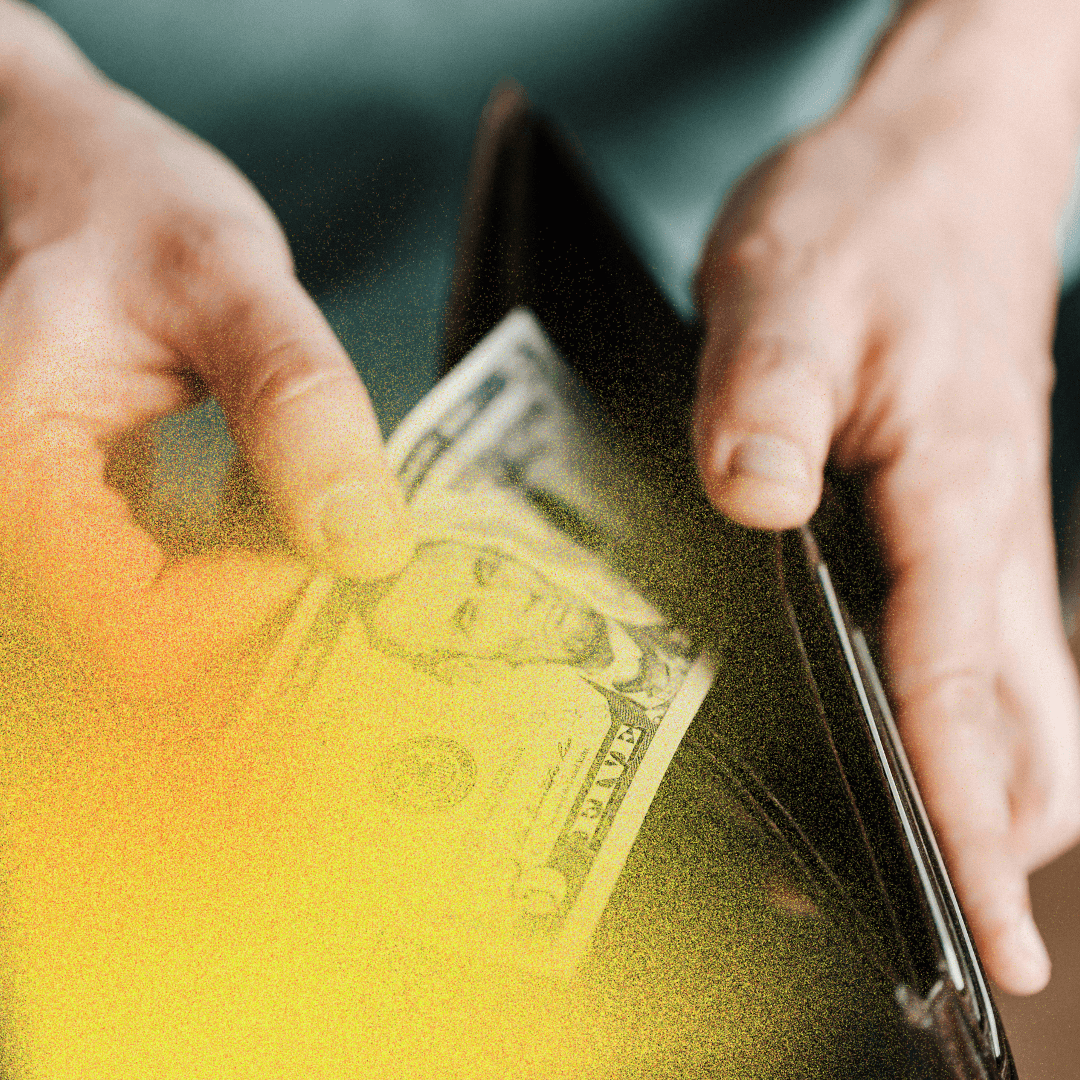You’ve probably seen it—that little line item tacked onto a bill labeled “credit card surcharge” or “processing fee.” Sometimes it’s disguised as a “convenience fee,” but make no mistake: it’s an added cost to your customer. These fees are becoming so common they’re like a stealthy new tax. But unlike taxes, which support public services, surcharges pad the profits of banks and processors.
Surcharging isn’t just another fee—it’s a predatory practice designed to pad the profits of credit card processors while leaving businesses and consumers holding the bag. If adopted widely, it will hyperinflate costs, drive away customers, and erode trust in small businesses. The worst part? Business owners, who are also consumers, will feel the sting twice—once at the register and again in their bottom line. All the while, credit card processors will be laughing all the way to the bank.
A third of small businesses in the U.S. are now adding surcharges to credit card transactions, according to a recent J.D. Power survey. The data analytics firm surveyed 3,841 U.S. small businesses between August and October and found that 34% said they added a surcharge when a customer paid with a card. This alarming trend highlights how pervasive and normalized this practice has become, despite its harmful effects on both businesses and consumers.
What Exactly Is Surcharging?
Surcharging means passing credit card processing fees onto your customers. It may seem like a way to recover transaction costs, but here’s the catch: processors often apply their percentage fee on the inflated, surcharged total—a sneaky form of double-dipping.
Example:
- You sell a product for $100 and add a 3% surcharge.
- The total is now $103.
- Your processor charges their fee (let’s say 2.24%) on $103, not $100.
Those extra pennies per transaction? They snowball into billions industry-wide. In 2023 alone, $5.2 trillion in credit card transactions occurred. If surcharges averaged 3%, that’s a potential $156 billion in fees—with processors skimming an extra $3.5 billion off the top.
At the end of the day, it’s the American consumer who pays.
Why Surcharging Can Backfire for Your Business
Some businesses understandably see surcharging as a straightforward solution to credit card fees. Like an import tariff, why not shift that burden to the customer if your business pays a processing fee?
Well, you have some pitfalls to consider when shifting that burden:
- Customer Backlash: No one likes surprise fees. They can lead to negative reviews, social media complaints, and lost customers.
- Hidden Inflation: Surcharges contribute to rising costs, eroding consumer confidence and dampening spending habits.
- Reputational Damage: Nickel-and-diming your customers can tarnish your brand, especially when competitors offer transparent pricing.
- Legal Risks: Some states ban or restrict surcharging. Missteps can lead to hefty fines.
The Negative Impact of Surcharging on Consumers
Surcharging doesn’t just hurt businesses—it directly affects consumer behavior and satisfaction:
- Legal Disapproval: According to a LendingTree survey, 57% of Americans believe that charging consumers to offset credit card processing fees should be illegal.
- Spending Habits: LendingTree’s August 2023 survey of 1,555 credit card holders revealed that 73% would use credit cards less if surcharges became a regular occurrence.
- Customer Satisfaction: J.D. Power’s January 2024 survey showed consumer satisfaction scores were 24 points lower (on a 1,000-point scale) for businesses that added surcharges compared to those that didn’t.
- Refusal to Pay: 58% of credit card users who’ve never encountered a surcharge say they would refuse to pay if a merchant tried to impose one.
- Cash Preference: A PYMNTS.com study found that 71% of cardholders have switched to cash to avoid surcharges.
These statistics paint a clear picture: surcharges can deter customers, decrease transaction volumes, and ultimately harm your bottom line.
However, encouraging customers to switch to cash isn’t necessarily the solution. According to the IHL Group, the actual cost of handling cash as a payment medium ranges from 4.7% to 15.3%, making it potentially more expensive than processing credit card payments. This hidden cost is often overlooked but can significantly impact a business’s profitability. For more details on the hidden costs and benefits of cash vs. credit, check out this VeriFee article. https://www.verifee.com/resources/cash-vs-credit-hidden-costs-benefits/
Where Is Surcharging Banned or Restricted?
Surcharges are so polarizing that some states have laws regulating or banning this practice. Here’s a quick look at these states:
| State | Surcharging Status | Notes |
| Connecticut | Banned | Merchants can’t charge extra for card use. (CT Gen. Stat. §42-133ff) |
| Maine | Banned | Merchants must adhere to certain disclosure requirements. (Me. Rev. Stat. Tit. 9-A, §8-509) |
| Massachusetts | Banned | Prohibits surcharges, but allows discounts for cash. (MA Gen. Laws Ch. 140D §28A) |
| Oklahoma | Banned | Prohibits all credit and debit card surcharges. (§14A-2-417) |
| California | Banned but Challenged | Technically prohibited, but laws have faced legal challenges. Companies can offer discounts to all customers for paying with cash, check or credit card (CA Civil Code §1748.1) |
| Colorado | Restricted | Companies may charge up to a 2% surcharge or an amount equal to the company’s actual costs paid to a processor. |
| Georgia | Restricted | Organizations can charge a convenience fee for using a credit card, but only if they accept other payment methods without fees. |
| Kansas | Restricted | Companies can add on up to a 4% surcharge, but they must notify the customer before the sale is complete. |
| Minnesota | Restricted | Some surcharges are permitted, but the organization must include the surcharge in the advertised price of a purchase unless the consumer can reasonably avoid the surcharge. . |
| New Jersey | Restricted | Surcharges are permitted, but they may not exceed the cost the merchant pays to accept the card. |
| New York | Restricted | Surcharges are legal, but the seller must clearly disclose the fees and list the pricing with the fee and a cash price without the fee before the sale. |
| Nevada | Restricted | Companies can impose surcharges, but they may not exceed the cost the merchant pays to accept the card. |
| South Dakota | Restricted | Surcharges are allowed, but they must be equal to or less than the cost the merchant pays to accept the card. |
| Texas | Restricted | Surcharges are prohibited, but companies can charge convenience fees and service fees or offer cash discounts. |
Cash Discounting: The Sneaky Cousin of Surcharging
Companies have found sneaky ways to impose surcharges without being so candid about it. Instead of charging a fee for using a card, the company increases all prices by the fee they would typically charge — let’s call it a 3% increase — and offers the same percentage discount to cash or check customers.
With this practice, that $100 product now carries a $103 price tag for credit card users, and the consumer is none the wiser. If you use a credit card, you’re secretly paying the surcharge anyway.
Credit card processors may tell companies that cash discounting programs are perfectly legal in all states, as they skirt the surcharge laws by rolling the surcharge into the price and offering a cash discount. To a savvy consumer, though, a fee is a fee, regardless of how you paint it.
The Slippery Slope of Normalizing “Junk Fees”
Surcharging falls under the broader umbrella of “junk fees,” a term referring to hidden or inflated fees that don’t correspond to actual costs. Some examples of these fees in the real world are the random “resort fee” on your hotel bill or the “service charge” on your concert ticket. Once industries normalize these fees, it’s tough to go back.
Credit card processors are pushing hard to normalize them. They’ve even hired political lobbyists to protect surcharging and reframe it as “freedom for businesses.”
As more businesses embrace surcharging, consumer groups fear it will become the norm and increase prices.
The Processors’ Hidden Agenda
Credit card processors aren’t just passively benefiting from surcharges—they’re actively working to normalize them. Behind the scenes, they’re lobbying to shift the surcharge burden directly onto consumers, eliminating even the pretense of merchant control. Some processors are already floating surcharge rates as high as 4%, a dramatic increase when compared to the average interchange fee for a Visa debit card, which is just 0.05%.
By grouping pricing together and inflating fees under the guise of “standardization,” processors aim to blur the lines between legitimate costs and profit-padding junk fees. This normalization isn’t just bad for businesses—it’s a slippery slope toward unchecked corporate greed, where consumers bear the brunt without even realizing it.
Two Common Surcharge Programs You Should Know
You’ll generally see two types of surcharge programs:
- Standard Surcharge Model: You add a 3% surcharge on all credit card transactions, and the processor charges you the standard processing fees, even on the 3% fee you charged. You don’t even recoup the full 3% since the processor gets its cut of the regular price and the extra.
- “Zero-Fee” Processing: The processor charges your customers a 3%+ fee, claiming “no fees for the merchant.” However, the processor retains the difference between what they pay in interchange and what your customers pay as a surcharge as profit. You may save money initially, but your customers end up footing the bill, potentially damaging your future business chances.
Regardless of the scenario, the true beneficiaries of these surcharges are the processors. This passing of the buck has led many consumers to vote with their wallets and boycott businesses that pass these fees onto customers.
The Economic Impact: Surcharges vs. Inflation
Over the past 30 years, the average inflation rate in the U.S. has hovered around 2.5% annually. While inflation is a natural economic phenomenon, surcharges represent an artificial, avoidable cost layered on top. Imagine adding an extra 3-4% to every transaction—from your morning coffee to your grocery bill to your gas tank. This isn’t just an added fee; it’s hyperinflation disguised as a convenience charge.
If surcharges become normalized, they could outpace traditional inflation, creating a compounding effect. For example, consider groceries: with suppliers, distributors, and retailers all passing on credit card surcharges, the cumulative effect could inflate prices significantly beyond the typical rate of inflation. The same goes for gasoline, utilities, and everyday essentials. It’s an economic ripple effect that touches every corner of the marketplace.
The Path Forward: Stop Passing the Buck
Credit card processors have convinced many businesses that passing on surcharges to customers or offering cash discounts are cost-cutting measures that benefit the business. They convince you of this all while scraping from the top of the surcharges you’re charging.
Now’s the time to stop passing the buck and demand a few key things from credit card processors.
Steps You Can Take
- Review more transparent pricing structures: Consider processors with an interchange-plus pricing model. In this model, the interchange fee and the processor’s markup are separate, offering more transparency in the pricing so you can more easily negotiate your fees.
- Compare processors: It’s easy to assume all processors are equal, so you sign up with the first one who walks through your door with a flashy new way to pass on fees. Instead, compare multiple processors and scrutinize their fees before choosing the best one for you.
- Focus on your customers: Your customers are the ones who keep the lights on, so focus on reducing all costs to help offset processing fees and keep your prices low.
At VeriFee, we pride ourselves on exposing these predatory processor practices and pushing businesses to fight against them. This will put businesses back in control and keep credit card processors from using junk fees to collect even more revenue.
Stop the Surcharge. End the Cash Discount Gimmick. Fight Back.
Business owners like you must oppose another junk fee disguised as a convenience or cost-recovery measure. Focus on transparency, fair fees and customer loyalty, and you can protect your brand and bottom line without penalizing the customers who keep your doors open.


